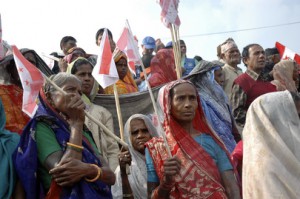A Time for Peace: Nepal Adopts National Action Plan on Women, Peace and Security
Date:

Nepal has adopted a National Action Plan on women, peace and security, making it the first country in South Asia and the second in Asia to do so.
Adopted on 17 February and based on UN Security Council resolutions 1325 and 1820, the Plan was developed through a collaborative process with UN Women, the government, political parties, civil society organizations and international development partners. It provides Nepali women the opportunity to get actively involved in the reconstruction of their country, which emerged from a decade-long conflict in 2006.
“The government is willing to collaborate with the Civil Society Organizations (CSOs) for the implementation of NAP [National Action Plan], said Mr. Madhav Prasad Ghimire, Chief Secretary, Government of Nepal. “Count on us if you face any challenges in the implementation of NAP.
Nepal's armed conflict led to an estimated 13,256 deaths, according to Informal Sector Service Centre (INSEC), a Nepali human rights group. It also caused gross human rights violations, such as mass killings, disappearances, torture and violence against women.
“Political and sexual violence was common as was the destitution of women across Nepal, said Bandana Rana, Chairperson, SAATHI. “The key agenda during those ten years [of conflict] for women's groups was peace, and women have been working at different levels to generate peace.
Apart from help in drafting the Plan, UN Women supported the Ministry of Peace and Reconstruction to increase awareness about the UN Security Council resolutions, improve the capacity of government personnel, train women leaders and advocate for women's participation after the armed conflict ended.
As a result of awareness and advocacy in the past few years, 33 percent of seats in the Constituent Assembly and local peace committees are now reserved for women.
The adoption of the Plan is of great significance globally as only 25 countries of 192 member states have adopted such plans.